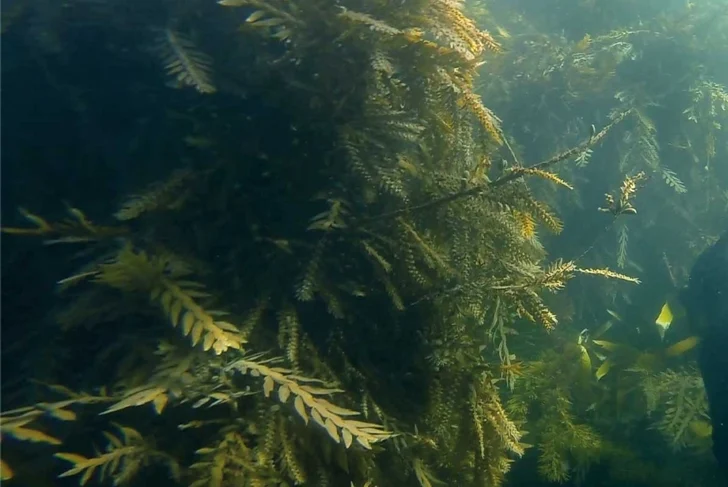Kelp Forests: Vital Underwater Ecosystems on the Brink
Dan McNeill Gwiisihlgaa straps on his scuba gear, grabs a two-foot metal rake, and descends into the cool, clear waters surrounding Haida Gwaii—a remote archipelago off the coast of British Columbia. As the marine stewardship director for the Council of the Haida Nation, McNeill isn’t diving for sport. He’s hunting urchins—spiny sea creatures that, left unchecked, pose a serious threat to one of the world’s most overlooked ecosystems: kelp forests.
Kelp may not command the attention of coral reefs or tropical fish, but it’s just as vital to our planet’s health—and it’s vanishing at an alarming rate.
A Cultural and Ecological Treasure
To the Haida people, kelp isn’t just a plant—it’s part of their cultural identity. “It’s sustenance for us,” McNeill explains. “It’s part of who we are.” But this brown algae, which forms towering forests beneath the waves, is disappearing fast. And in Haida Gwaii, that loss is deeply personal.
From 2017 to 2021, McNeill took part in “Chiix̱uu Tll iinasdll: Nurturing Seafood to Grow,” a restoration initiative focused on reviving the region’s kelp forests. The method was straightforward: reduce the number of sea urchins, which have exploded in population due to the absence of natural predators like sea otters—hunted to local extinction centuries ago during the maritime fur trade.
Without otters to keep them in check, urchins overgraze kelp forests, leaving behind barren seabeds known as “urchin barrens.” The result is a collapsed ecosystem, where marine life struggles to survive and biodiversity plummets.
Nature’s Unsung Hero
Kelp might not be flashy, but it plays an irreplaceable role in our global environment. These underwater forests, which grow along coastlines around the world, act like the ocean’s lungs—absorbing carbon dioxide, filtering nutrients like nitrogen and phosphorus, and producing oxygen through photosynthesis. In fact, kelp forests are considered one of the most efficient carbon sinks on Earth.
They also support coastal fisheries, stabilize sediment, protect shorelines from storm surge, and provide shelter for a vast array of marine species. Collectively, kelp forests contribute more than $500 billion to the global economy each year through their ecological services.
Yet despite their significance, more than half of the world’s kelp forests have disappeared over the last 50 years.
An Invisible Crisis
Why hasn’t this loss made headlines? According to Aaron Eger, founder of the Kelp Forest Alliance, the problem lies in how ocean conservation is prioritized. “The ocean is often neglected compared to the land,” he notes, “and then within the ocean, there’s a strong focus on coral.”
This bias plays out in funding, awareness, and international policy. A 2021 study published in Frontiers in Marine Science found that for every time kelp forests were mentioned in global environmental agreements, coral reefs were referenced 38 times, mangroves 43 times.
Kelp, it seems, is fighting an uphill battle—not just against warming waters, pollution, and overgrazing, but also against invisibility.
Restoring What’s Been Lost
To change that, Eger’s organization launched the Kelp Forest Challenge in 2023—a global movement aiming to restore one million hectares and protect three million hectares of kelp habitat by 2040. It’s an ambitious goal, but one that’s gaining momentum.
Restoration techniques vary by region but generally involve reducing threats (like urchins or pollution) and supporting regrowth by transplanting or seeding young kelp. Tracking progress is part of the plan too: the Kelp Forest Alliance maintains an open dashboard so the public can follow pledges and restoration milestones.
“We’re off to a good start,” Eger says, “but we need stronger international commitment and coordination.”
Some regions are already leading the way. Japan and South Korea have a rich history of kelp cultivation and restoration, while California and Washington state are actively building frameworks for kelp conservation. Still, the Kelp Forest Challenge remains the only initiative tackling this issue on a global scale.
A Lesson in Interconnectedness
In Haida Gwaii, the principle of gina ‘waadluxan gud ad kwaagid—“everything depends on everything else”—guides how the Haida Nation approaches environmental stewardship. McNeill sees the kelp crisis as a clear example of this truth.
“The sea otter played such a role in regulating urchins, and when you remove them, the whole system can change,” he explains. “It just goes to show how interconnected our system is.”
And that interconnectedness extends far beyond the waters of Haida Gwaii. As climate change intensifies and coastal ecosystems continue to degrade, the fate of kelp forests has global consequences—for biodiversity, for fisheries, and for the planet’s ability to absorb carbon.
A Call to Action
Though kelp forests may seem like distant underwater gardens, their health is tied directly to our own. Supporting kelp restoration—through awareness, advocacy, or sustainable seafood choices—helps maintain the delicate balance that all life depends on.
And as McNeill, Eger, and communities around the world have shown, it’s not too late to act. With knowledge, care, and a commitment to nurturing nature’s silent giants, we can turn the tide for these vital ecosystems before they’re lost for good.

